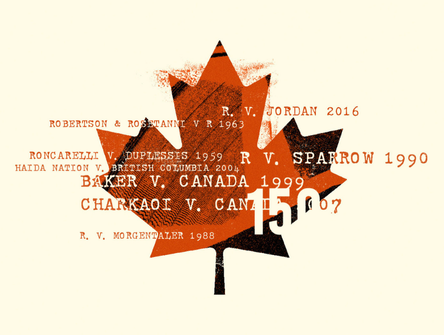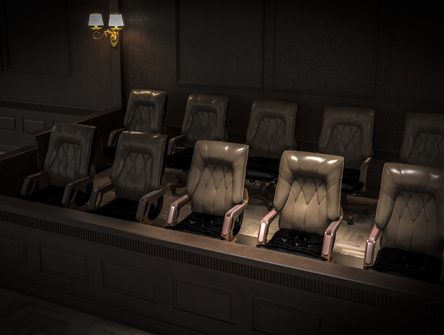So how, exactly, might Canada become a dictatorship? Would abolishing the House of Commons require unanimous, or merely substantial, provincial consent? If the Prime Minister’s unfettered discretion to appoint Senators can include non-binding elections, does the same apply to appointing superior court judges? These questions from the bench injected life, even levity, into the three-day Senate reference heard in November. Though the hearing was ostensibly about Senate reform, I agree with Daniel Jutras, the dean of law at McGill University, who has observed that calling it a Reference on reform of the Senate is misleading. The Reference was not so much about Senate reform as it was about the parameters of constitutional amendment and the constitutive elements of our politics, self-governance and democracy.
Included among the hearing’s many interesting moments was a comment by Chief Justice Beverley McLachlin. On the first day, she admitted to being struck by the emphasis in numerous facta on “what the founding fathers thought”. It reminded her, she said, of “American originalism”. Indeed. I can’t recall the last time framers’ intent got so much attention. The attention was the result of numerous provinces arguing that shorter term limits and non-binding elections would affect the Senate’s ability to perform its original purpose – ensuring sober second thought of legislation. The entire point of the Senate, they say, is that it is unelected and unbound by ordinary mechanisms of political accountability. Indeed, the Senate’s independent character was a predicate for their entry into Confederation. (Note that the Senate’s other original purpose – to ensure a wealthy elite’s oversight of Commons deliberation – is not mentioned).
The focus on originalism – and what the Court will do with it – is interesting. Over the past 30 years, originalism has largely been relegated to the constitutional dustbin. The trajectory began in 1929 with the most famous Senate decision of all, the Persons Case, which considered whether the term “qualified persons” should continue to carry a gender-specific meaning. Rejecting that idea, Viscount Lord Sankey observed that the British North America Act had planted “a living tree capable of growth expansion within its natural limits.” Just as Canada would evolve, so too would its constitution.
Much of modern constitutional law involves entrenched rights. Thus, when one invokes originalism, it is normally to narrow the scope of constitutional provisions. So, another noteworthy aspect of the Senate Reference is how originalism was used not to narrow the interpretation of Part V (the amending formulae), but to expand it. If taken literally, neither the 7-50 rule nor the unanimity provision extends to term limits and non-binding elections. But numerous provinces, as well as the amicus curiae, argue that the text is only the starting point: one must venture beyond it, to the underlying principles animating the Senate’s original purpose.
This approach could have dramatic implications, not just for the Senate, but for all future applications of Part V. Consider, for example, the question of abolition. Those favouring unanimity as a pre-condition make two arguments. The first argument is a syllogism. Section 41(e) prescribes unanimity for amending Part V itself; Senate approval is required for amendments; ergo, abolition of the Senate amends the amending formula. While the argument has a certain elegance, at bottom it is a bootstrap. It seems odd to include the Senate in section 41, essentially, as a collateral matter. More honest, I think, is the second argument: the Senate is so integral to Canada’s political system that its abolition can only be achieved through unanimity.
The second argument rests on unstated assumptions about the parameters for profound constitutional change. This point received a dramatic illustration during Saskatchewan’s submissions. Like other Western provinces, Saskatchewan takes a more federal-friendly view of things than, say, Quebec or Ontario (indeed, its Premier has no use for the Senate at all). Saskatchewan argued that because unanimity is such a punishing standard, its use should be predicated on extremely clear textual indicators. This led Justice Karakatsanis to ask where other fundamental features of our system, like the right to vote and the duty to call elections, fit. After all, they aren’t specifically mentioned in section 41 either. Counsel Graeme Mitchell argued that those rights are protected by the Charter of Rights and Freedoms, which most people have assumed is subject to the general amending formula (since the Charter is not mentioned in Part V). Justice LeBel then retorted that this implies Canada could become a “dictatorship” so long as seven provinces agreed.
The challenge was, obviously, rhetorical. Yet its implications could be far-ranging. There is no part of the Constitution with which Canadians identify more strongly than the Charter. The Charter leaves the Senate far in its wake. An expansive reading of the unanimity formula to include institutions like the Senate might provide greater protection to the Charter (at least, for restrictive changes; efforts to expand its protection may well demand a different analysis). But, the question goes deeper than procedure, to the nature and limits of change itself. For, if the idea of Canada becoming a “dictatorship” is intolerable, it is hard to see how provincial unanimity mitigates anything. Might some aspects of our constitution, in other words, function as a one-way ratchet?
Admittedly, these are not questions likely to feature explicitly in the opinion. Nor are they issues over which the Court would exercise meaningful control. But the parameters of constitutional reform and other applications of Part V (including, possibly, January’s reference on the Supreme Court Act) is likely to exert some influence (however subtle) on the Court’s reasoning. The irony, of course, is that all of these arguments about essential elements of Canada’s politics and self-governance arise in the context of an institution that few Canadians would describe as carrying the great weight and influence ascribed to it at November’s hearing.



